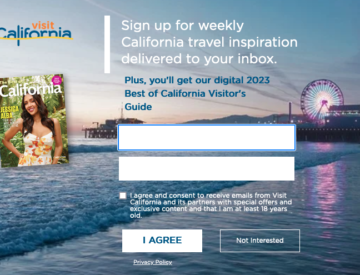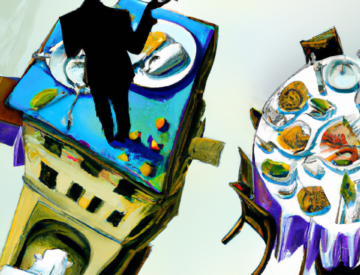Creating original, compelling content is a challenge for every hotel website, and it can look like an overwhelming task. Fortunately, we’ve got the experience and the expertise to help give your website a facelift.
We want to help give your direct bookings a serious boost, so we’ve put together a how-to for you.
Your website is how you present your hotel to the vast majority of the public, so it’s a major drive in creating perceptions and influencing people’s decision to book with you—or not.
In fact, 57% of all travel reservations are made on the internet.
Being able to tell a story and guide your guest through the whole experience of your hotel is key to increasing the engagement and conversion online. With that in mind, here’s some of our best advice on creating and marketing excellent content.
1. Customer Knowledge = Power
Knowing your audience is key to the success of any online seller, and tailoring content to suit your ideal guest is a must to increase the conversion rates for that audience.
Before starting to write your site’s content, you need to research your hotel’s guests and target the demographic who most regularly engage with your website. This will allow you to know what type of content to focus on, whether that’s families, retired folks, couples etc.
In this article about segmentation, you can find out more details about best practices for identifying your audiences.
Once you have identified your key markets, you need to actively generate online content that will engage with people, both through social channels and on your website to increase conversions.
2. Does Each Page Have a Focus?
When planning the content of your site, you should designate one topic per page of content. This will let your potential guests engage more easily with your site and understand the message each page is telling them.
When in doubt, grab a random third party and give them a few seconds to look at the page—do they know what it’s about? If not, rework it.
By breaking out topics into main pages and sub-pages, you’ll let your guests navigate your site with ease, and they in turn will spend longer on your site. This will also boost your search ranking overall.
a. Use keywords throughout page to emphasize the main point of the page
b. Include relevant imagery to the page.
c. Keep it simple.
d. Be personal. Use words that are inclusive, such as ‘your’ and ‘our’, to engage the user. This will build the relationship between your guest and your hotel’s brand.
3. Video Content
Over recent months, the power of video has become more and more apparent throughout search and social media. With the use of video, it is possible to create an emotive story and show the experience your guest would enjoy while staying in your hotel.
- People spend 50% more time watching YouTube videos year on year, which shows the huge growth and potential for using video on your site.
- Aside from Youtube, all social channels now have the power to host your video within their platforms.
- This gives you ease of access, and lets potential customers simply watch on their mobile.
- Keep video content short and sweet: you need to capture the viewer’s attention in the first 3 seconds, before they move on to the next post. As this experiment by Wishpond shows, only 25% of viewers watched the full video, and the average viewing time was just 14 seconds
Read also: Video Best Practices in Travel Marketing
4. Where to Start With My Page
The layout and structure of the page content is crucial for the customer engagement. For example, creating paragraphs that are broken out and easy to read will result in a higher level of time spent on the page.
Once customers are informed about your hotel, you will start to build a relationship with that customer and gain their loyalty.
What you should include:
- Headline
- Intro
- Key points
- Action Point
To get started, identify key goals.
When you start to create content, it is fundamentally important to identify the key goal of your page. Decide on what outcomes you would like from your website page. Your key goals might include:
- Making a booking
- Filling in an enquiry form
- Download a brochure
- Purchase a voucher.
- Sign Up for newsletter
Layout – Put your most important information first
Customers don’t read content, they scan the text for the most important information. So, it’s essential to put your most important information first.
Studies show that 80% of people will read a page headline, but on average, only 20% of those people will continue to read the bulk of the content. Given this, it is vitally important to focus on including an attention-grabbing headline on each page.
Check out this article on the ingredients of great content.
Your content should be actionable
When you create content for your page, take it as an opportunity to create clear calls to action. The content should drive them towards one of the goals you have set for your page. For example, once you’ve explained the benefits of your gorgeous presidential suite, include a clear call to action to encourage individuals to make a booking.
Don’t get lazy: make original content
One of the best ways to improve your site is to make sure you are creating original copy on your website. As you know, not only will Google penalise you for duplicate content and copyright infringement, visitors will lose interest if content is repeated across the site.
Instead, make your content reflective of the hotel’s brand and personality.
This will build a stronger relationship with your guests and resonate with them. Original content will reinforce the unique aspects of your hotel and what you can offer to a guest.
5. Use Your Unique Selling Points
What makes your business different? As a consumer browses the web, they will be looking for something that grabs their attention and makes them remember the product.
Look at your hotel and pick out your USPs: are you near a beautiful lake? Do you have great shopping nearby? Is your restaurant’s food incredible? How’s the atmosphere—playful? Rustic? Find out what makes your hotel tick.
Then, give a clear picture of what you can offer to a visitor. This will bring your guest further into the sales funnel and closer to purchase.
6. Rate Plan Descriptions
Keep it short and sweet.
Rate plans should show information about the offer and highlight its top features. It isn’t about selling the whole hotel—that’s what the rest of the site is for!
Here are some key formatting tips to remember when writing your rate plans:
- Consistency: Choose a style and stick to it – keep the fonts and text sizes consistent throughout all of the rate plans which are available.
- Tone: Keep the tone of the text the same for all descriptions of the rate plans. Whether you’re going for playful or formal, people will be distracted if you jump between tones.
- Positive Phrasing: Spin all your phrasing in a positive direction. For example, instead of saying ‘Advance Purchase: full credit card purchase required,’ say ‘Early Bird Discount’!
- Length: Avoid long paragraphs! When we read online, our eyes skim. Instead, use bullet points to highlight key information.
- Make it about the Plan: Again, you’re not selling the whole hotel here. Add an introductory line for each rate plan that uses the unique selling point for that specific offer, not the hotel’s USPs.
7. Upselling Your Property
Upselling gives you the perfect opportunity to create extra revenue streams for your property.
Potential upselling opportunities include:
- Inviting individuals to upgrade to ‘exclusive’ or ‘luxury’ junior bedrooms or suites.
- Highlighting additional features of the rooms- separate lounge & dining room, minibar, entertainment systems- television, ipod dock etc., walk-in wardrobe, signature linens or toiletries.
- A room with a view – invite individuals to upgrade to a room with spectacular mountain views, panoramic lake views, or a dual aspect view.
An important aspect in upselling your room is to ensure the rates are structured so the upgrade is of reasonable value to the customer—do some testing to find out which rate structures are most profitable for your hotel.
Look at what your hotel has to offer, and see where you have potential to add additional revenue to your bookings before the guest’s arrival. These perks could include dinner, a spa treatment, a round of golf or something similar.
Tip:
Avoid highlighting standard features like ‘hairdryer’, ‘direct dial telephone’, and ‘towels’
8. Use of Imagery
“A picture’s worth a thousand words,” and this holds doubly true for hotel websites. Creating an emotive picture of the hotel and what you can offer will immediately engage a guest and create a connection between them and the property.
Show the customer your story.
What is the core of your hotel, and what makes your hotel work? Is it your staff, your food, your product? If you make your own bread or your own beer, sell it with an image. People will connect with this and will understand what it is you do.
Choose each image carefully and limit the number of images to no more than 4 per page.
Use images to sell an experience. This will allow the potential customer to see themselves enjoying a stay at your hotel.
Read also: 5 Success Factors for Effective Storytelling in Travel
9. People Power – Show your feedback.
Think of your customers as your brand ambassadors, and harness the power of social proof. What they say about you will go a long way, whether it’s via social media, word of mouth or online.
It is important to actively encourage people to leave you comments via reviews, and for you to embrace these, whether they’re positive or negative.
In fact, according to a recent TrustYou study, 95% of travellers read reviews that affect their opinion on your hotel and influence the final decision of where to book.
4 Ways to encourage feedback:
- Respond to all feedback and reviews
- Take all feedback on board, and use it to action change throughout your business
- Use customer reviews as a selling point on your website and to reassure customers about their choice of hotel.
- Use post-stay emails to prompt reviews
Takeaways
Here are some Action Points for you to take away and give your content a boost:
- Review current content
- Identify room for improvement
- Use Your unique selling points
- Show the personality of your hotel
- Listen to your customers
This article is authored by Rachel McCoy and was first published on the blog of NetAffinity. It was republished here with permission of the author. Click here the read the original version.









Leave a Reply